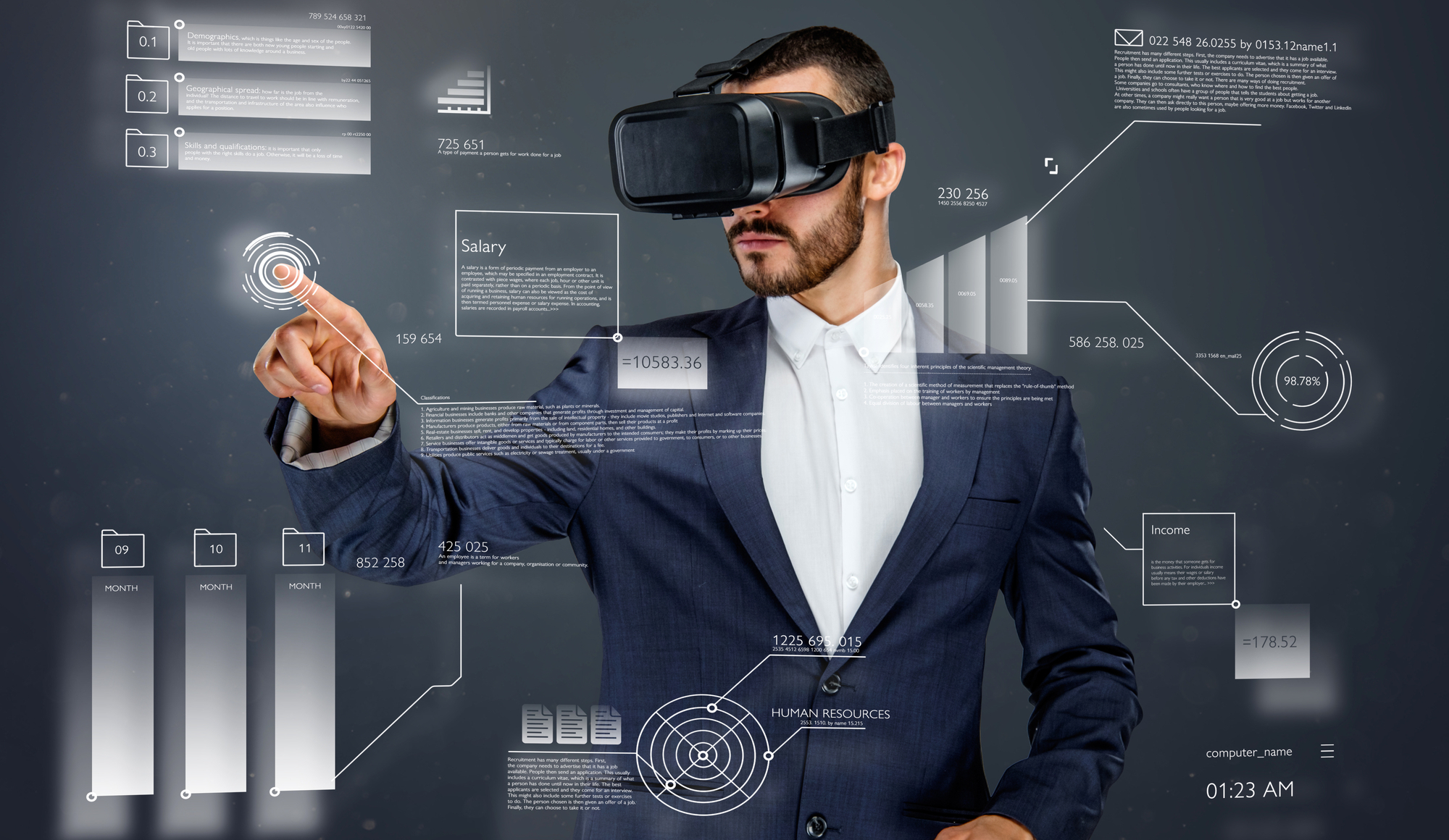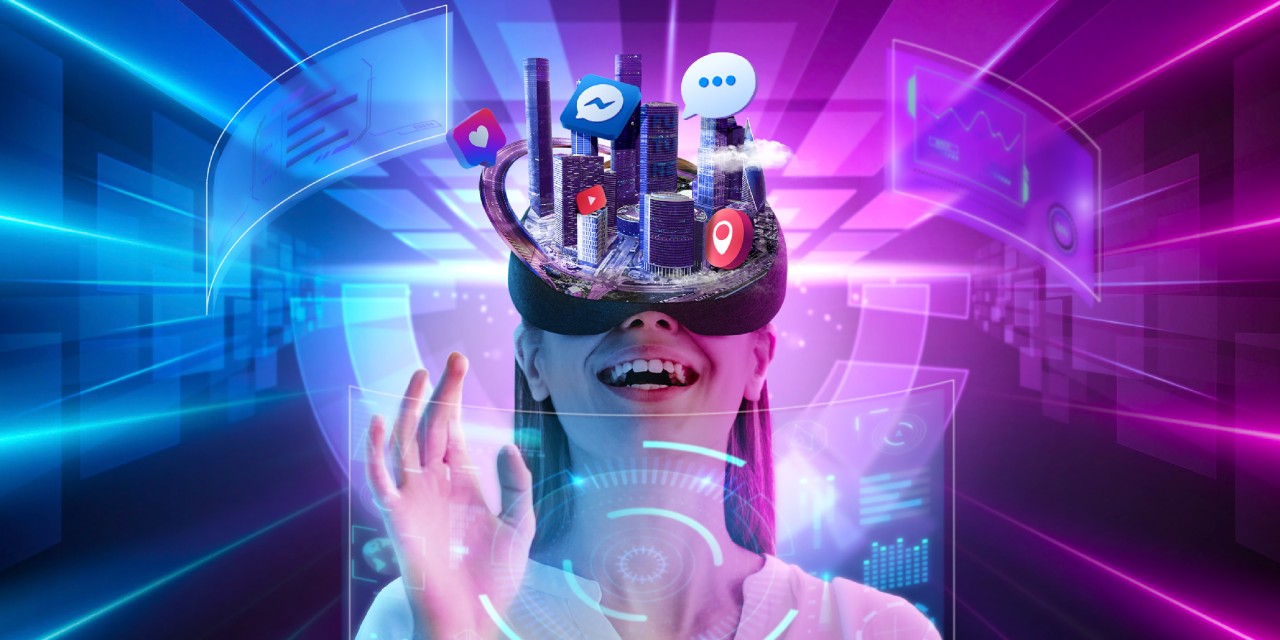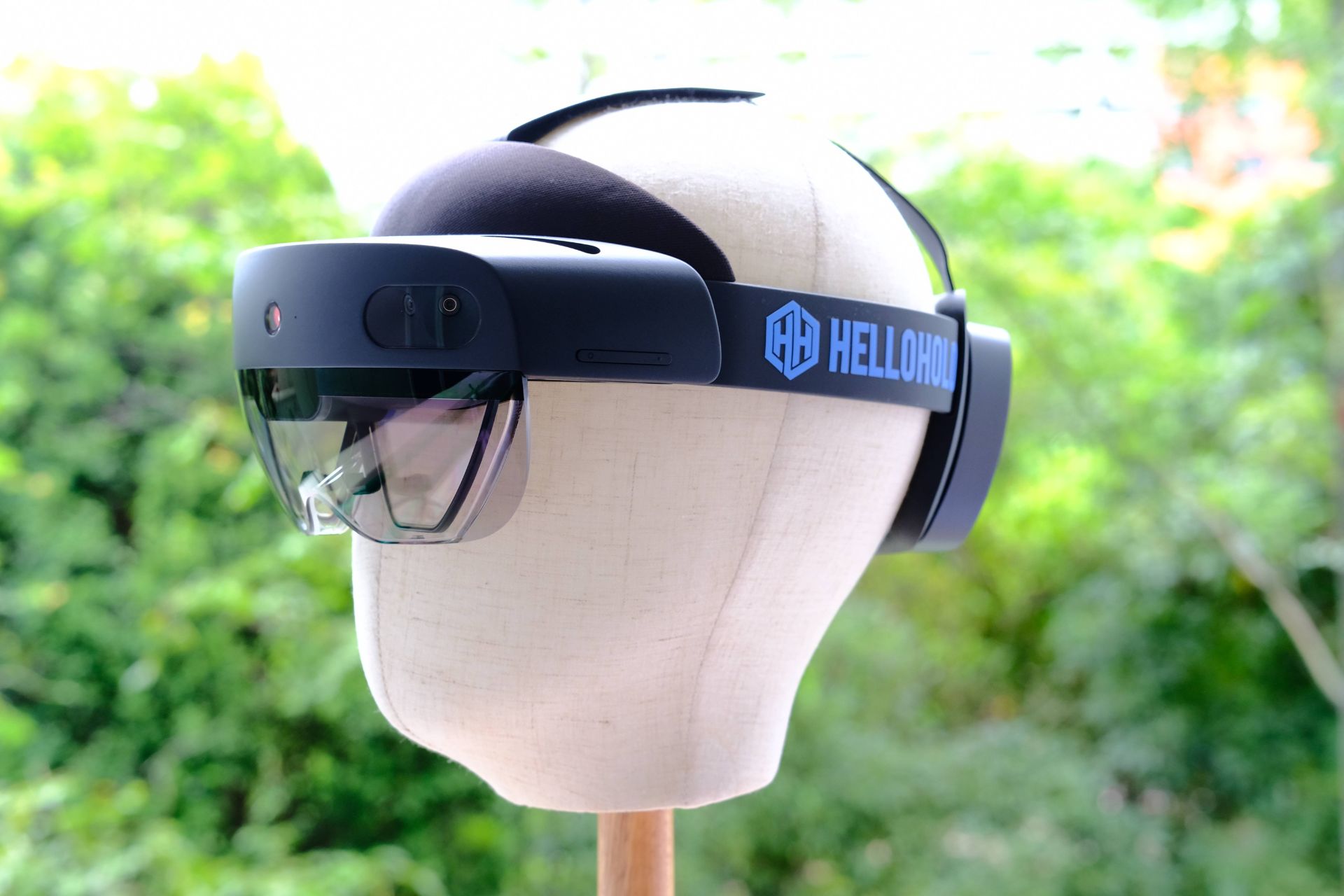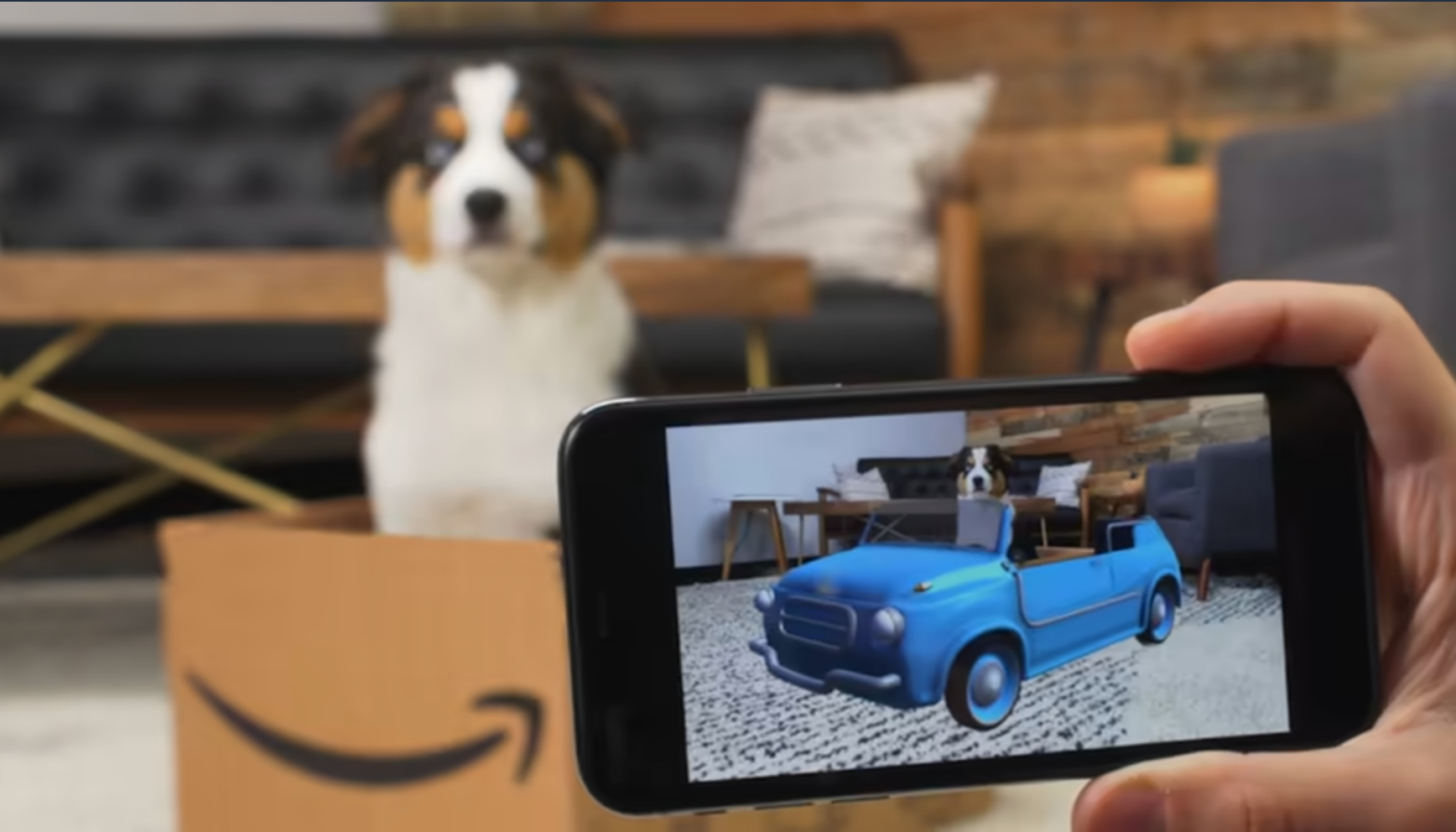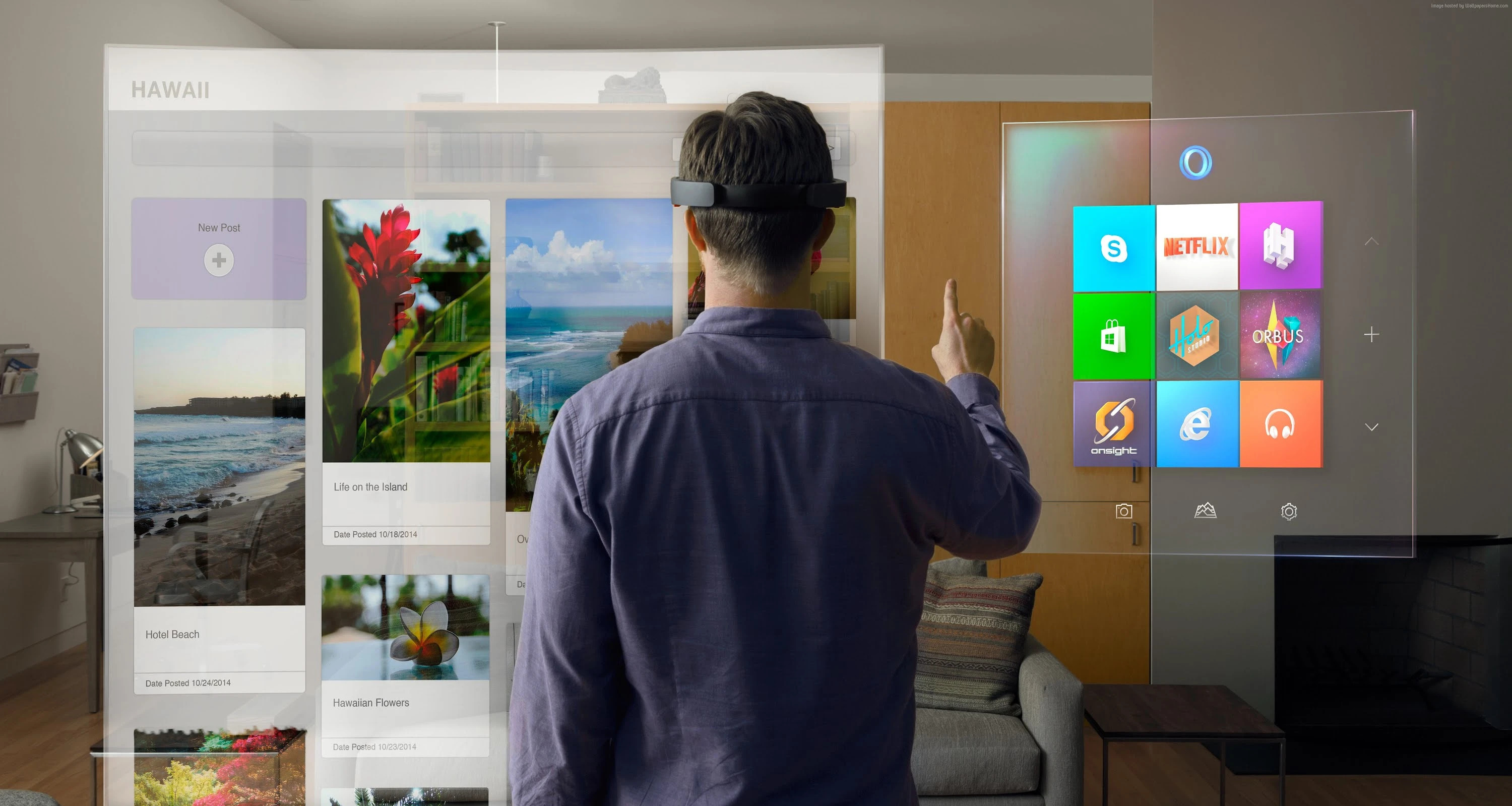The Benefits of Virtual Reality in Business
Virtual Reality (VR) is no longer just a technology for gaming and entertainment. It has found its way into various industries, including business, and is revolutionizing the way companies operate. Here are some key benefits of incorporating virtual reality into business practices:
- Enhanced Training and Development: Virtual reality offers a unique and immersive training experience for employees. Companies can simulate real-life scenarios, allowing employees to practice their skills in a safe and controlled environment. This results in faster and more effective learning, leading to increased employee competency and productivity.
- Streamlined Product Design and Prototyping: Virtual reality enables businesses to design and prototype products in a virtual environment. This eliminates the need for physical prototypes, reducing costs and saving time. Additionally, stakeholders can visually experience and provide feedback on product designs, leading to better iteration and refinement.
- Engaging Marketing and Advertising: Virtual reality provides a captivating medium for marketing and advertising campaigns. Companies can create interactive and immersive experiences that grab the attention of consumers. Whether it’s showcasing products, giving virtual tours, or presenting virtual demos, VR adds a new level of engagement and excitement to marketing efforts.
- Improved Customer Engagement and Interaction: Virtual reality allows businesses to engage with customers in innovative ways. For instance, VR can be used to offer virtual product demonstrations or allow customers to virtually customize and experience a product. This level of interaction not only enhances the customer experience but also increases the likelihood of making a purchase.
- Efficient Virtual Meetings and Collaboration: Virtual reality facilitates remote collaboration by creating a virtual meeting space where participants can interact as if they were physically present. This eliminates the need for travel and saves both time and money. Businesses can enable seamless collaboration, foster creativity, and eliminate geographical barriers.
- Effective Data Visualization and Analytics: Virtual reality enables businesses to visualize and analyze complex data in a more intuitive and immersive way. By converting data into a visual format, VR allows for better understanding, pattern recognition, and decision-making. This technology empowers businesses to make data-driven decisions with greater accuracy and efficiency.
- Advancements in Healthcare: Virtual reality is transforming the healthcare industry through applications such as surgical training, pain management, and therapy. VR simulations enable medical professionals to practice surgical procedures and enhance their skills. It also provides a therapeutic tool for patients, helping them manage pain and anxiety.
- Innovations in Real Estate and Architecture: Virtual reality has revolutionized the real estate and architecture industries. It allows potential buyers to virtually explore properties and experience the layout and ambiance before making a purchase decision. Architects can also use VR to create virtual walk-throughs, enabling clients to visualize and provide feedback on designs.
- Enriching Tourist Attractions and Experiences: Virtual reality is enhancing the tourism industry by offering immersive and interactive experiences to travelers. Historical sites, museums, and theme parks can incorporate VR technology to provide virtual tours and create interactive attractions, making the visit more memorable and engaging.
- Thriving Gaming and Entertainment Sector: Virtual reality has had a significant impact on the gaming and entertainment industry. It brings players into a virtual world, providing a more immersive and realistic experience. VR gaming has become increasingly popular, offering gamers an entirely new dimension of gameplay and enjoyment.
Overall, the integration of virtual reality in business operations brings numerous benefits, ranging from improved training and development to enhanced customer engagement and innovative marketing. As technology advances, virtual reality has the potential to reshape various industries and create new opportunities for businesses.
Virtual Reality Training for Employees
In today’s fast-paced business environment, training employees efficiently and effectively is crucial for success. Virtual reality (VR) provides an innovative solution for employee training by creating immersive and realistic simulations. Here are some key benefits of using virtual reality for employee training:
Realistic Simulations: Virtual reality allows employees to experience realistic simulations of various scenarios. Whether it’s simulating customer interactions, emergency situations, or complex procedures, VR provides a safe and controlled environment for employees to practice and develop their skills. This hands-on approach enhances learning retention and prepares employees for real-world challenges.
Cost and Time Efficiency: Traditional training methods often come with high costs and time-consuming logistics. Virtual reality eliminates the need for physical training materials, venues, and trainers, resulting in significant cost savings. Moreover, VR training can be conducted remotely, saving employees’ time and allowing them to learn at their own pace. This flexibility reduces the impact on daily operations and accelerates the onboarding process.
Engaging and Interactive Learning: Virtual reality training engages employees on a whole new level. Instead of passive learning through lectures or videos, VR provides an interactive and immersive experience. Employees can actively participate in simulations, make decisions, and see the immediate consequences of their actions. This interactive learning approach fosters engagement, motivation, and knowledge retention.
Mistake-free Environment: VR training allows employees to make mistakes without any real-world consequences. They can learn from their errors and experiment with different strategies until they achieve the desired outcome. This trial-and-error approach builds confidence, encourages innovation, and minimizes the fear of failure. Employees can gain valuable experience in a risk-free environment, leading to better performance in their roles.
Adaptable Training Modules: Virtual reality training modules can be easily adapted to meet specific training needs. Companies can create customized simulations that align with their industry, business processes, and specific job roles. This flexibility allows employees to receive targeted training that addresses their specific challenges and skill requirements. With VR, training can be tailored to individual and team needs, ensuring maximum impact and effectiveness.
Remote and Global Collaboration: Virtual reality training transcends geographical boundaries, enabling employees from different locations to collaborate seamlessly. VR provides a virtual training environment where team members can interact, communicate, and work together as if they were in the same physical space. This fosters cross-functional collaboration, knowledge sharing, and a sense of teamwork, regardless of distance or time zones.
Continuous Learning and Feedback: Virtual reality training can be designed to offer ongoing learning opportunities. Companies can incorporate performance tracking and assessment tools within VR simulations. This enables employees to receive immediate feedback on their performance, identify areas for improvement, and continuously work on enhancing their skills. The real-time feedback loop helps employees track their progress and motivates them to strive for excellence.
Virtual reality training for employees is transforming the way companies educate and develop their workforce. By providing realistic simulations, cost-efficient solutions, interactive experiences, and global collaboration opportunities, VR training ensures that employees are well-prepared and equipped to tackle the challenges of their roles. Investing in virtual reality training is an investment in the success and growth of your business.
Virtual Reality for Product Design and Prototyping
Innovation is at the core of successful product design and development. Virtual reality (VR) is revolutionizing the product design and prototyping process by providing designers and engineers with a powerful tool for visualization and iteration. Here are some key benefits of using VR for product design and prototyping:
Immersive Visualization: Virtual reality allows designers to visualize their product designs in a fully immersive and realistic environment. They can explore and interact with 3D models as if they were physically present, gaining a deep understanding of the design’s form, function, and aesthetics. This immersive visualization reduces design errors and enhances the decision-making process.
Real-time Design Iteration: Virtual reality enables designers to make real-time design changes and iterations. They can manipulate the virtual 3D models, modify dimensions, materials, and textures, and observe the immediate impact of their changes. This iterative process allows for rapid design refinement and accelerates the time to market by reducing the need for physical prototypes.
Cost and Time Savings: Traditional product prototyping can be costly and time-consuming. Virtual reality eliminates the need for physical prototypes, saving material costs and reducing the time required to create and test multiple iterations. VR also streamlines the collaboration between designers, engineers, and stakeholders, as they can visually experience and provide feedback on the virtual prototypes in real-time.
Enhanced Stakeholder Communication: Virtual reality simplifies stakeholder communication during the design and prototyping phase. Designers can create virtual walkthroughs, allowing stakeholders to experience the product design from different perspectives. This enables stakeholders to provide specific and actionable feedback, leading to better alignment and reducing the risk of misunderstandings or misinterpretations.
Design Validation and Testing: Virtual reality allows designers to validate their product designs before investing in physical prototypes. They can simulate product usage scenarios, test ergonomics, conduct virtual user testing, and identify potential issues or improvements early in the design process. This eliminates costly design changes during later stages and ensures that the final product meets user requirements.
Collaborative Design and Feedback: Virtual reality promotes collaborative design and feedback loops. Designers and stakeholders can join virtual design review sessions, where they can discuss and provide feedback on the product design in real-time. This collaborative approach fosters creativity, accelerates consensus-building, and ensures that all perspectives are considered throughout the design process.
Market Testing and Customer Feedback: Virtual reality allows companies to conduct market testing and gather customer feedback on new product designs. Virtual prototypes can be showcased to potential customers, allowing them to interact with the product and provide valuable insights. This early customer feedback helps companies refine their designs, optimize features, and align their products with market needs and preferences.
Disruption and Innovation: Virtual reality opens up new possibilities for innovative product design and development. It allows designers to think outside the box, experiment with unconventional concepts, and push the boundaries of creativity. VR enables the exploration of designs that may have been deemed too risky or expensive using traditional methods, fostering disruptive innovation in product development.
Virtual reality is transforming the product design and prototyping process by providing designers with a powerful tool for visualization, iteration, collaboration, and innovation. By leveraging the benefits of VR, companies can create better products, reduce time to market, and stay ahead of the competition in today’s rapidly evolving market.
Virtual Reality in Marketing and Advertising
In the world of marketing and advertising, capturing the attention of consumers and creating memorable experiences is vital. Virtual reality (VR) has emerged as a game-changing technology, providing marketers with new and innovative ways to engage and connect with their target audience. Here are some key benefits of using virtual reality in marketing and advertising:
Immersive Brand Experiences: Virtual reality enables marketers to create immersive and interactive brand experiences that captivate consumers. With VR, brands can transport users to virtual worlds where they can engage with products, explore environments, and participate in memorable experiences. This heightened level of immersion enhances brand recall and leaves a lasting impression on consumers.
Product Demonstrations and Showcases: Virtual reality allows companies to showcase their products like never before. VR experiences can simulate the usage and features of products, giving consumers a realistic and interactive demonstration. From virtual test drives to virtual try-on experiences, VR enables consumers to experience products in a virtual environment, leading to increased interest and purchase intent.
Virtual Tours and Destinations: Virtual reality can transport consumers to destinations they may not have the chance to visit physically. Travel companies, hotels, and tourist attractions can use VR to offer virtual tours of destinations and attractions. Users can virtually explore famous landmarks, immerse themselves in different cultures, and get a taste of what it’s like to be in a particular location. This experiential marketing approach helps generate excitement and fuels the desire to travel.
Interactive 360° Video: Virtual reality allows marketers to create immersive 360° videos, providing viewers with a unique and interactive perspective. Brands can tell compelling stories and engage users by allowing them to control their view within the video. This level of interactivity enhances user engagement and makes the content more memorable, leaving a lasting impact on the audience.
Virtual Events and Brand Activations: Virtual reality opens up opportunities for brands to host virtual events and brand activations. With the ability to create virtual environments, brands can organize virtual conferences, product launches, and immersive brand experiences. This not only eliminates geographical barriers but also provides a cost-effective solution for reaching a wider audience and generating buzz around the brand.
Personalization and Customization: Virtual reality offers the potential for personalized and customized marketing experiences. Brands can create virtual experiences that adapt to individual preferences and behaviors. Whether it’s customizing virtual avatars, tailoring product recommendations, or delivering personalized messages within the virtual environment, VR allows for a personalized marketing approach that resonates with consumers.
Engagement and Emotional Connection: Virtual reality creates a unique opportunity for brands to connect with consumers on an emotional level. By immersing users in a virtual world, brands can trigger emotional responses and create a deeper connection. Whether it’s experiencing the thrill of extreme sports or reliving nostalgic memories, VR experiences generate strong emotions and foster a sense of brand loyalty and affinity.
Data and Analytics: Virtual reality provides marketers with valuable data and analytics to gain insights into consumer behavior and preferences. By tracking user interactions within the virtual environment, brands can analyze user behavior, measure engagement levels, and optimize future campaigns. This data-driven approach enables marketers to refine their strategies and deliver more targeted and impactful marketing experiences.
Virtual reality is transforming the marketing and advertising landscape by offering immersive brand experiences, interactive demonstrations, and personalized marketing campaigns. By harnessing the power of VR, brands can stand out from the competition, engage consumers in novel ways, and create lasting connections with their target audience.
Virtual Reality for Customer Engagement and Interaction
When it comes to engaging and interacting with customers, virtual reality (VR) offers a whole new dimension of possibilities. With VR, businesses can create immersive and interactive experiences that captivate their audience. Here are some key benefits of using virtual reality for customer engagement and interaction:
Immersive Product Experiences: Virtual reality allows businesses to create immersive experiences that enable customers to explore and interact with products in a virtual environment. Whether it’s trying on virtual clothing, test-driving a virtual car, or visualizing how furniture would look in their space, VR immerses customers in the product experience, leading to increased engagement and a better understanding of the product’s value.
Virtual Showrooms and Retail Spaces: Virtual reality provides businesses with the opportunity to create virtual showrooms and retail spaces. Customers can navigate through virtual stores, browse products, and make purchase decisions in a highly realistic and interactive way. VR eliminates the limitations of physical space, allowing businesses to showcase an extensive range of products in a single virtual location.
Virtual Try-On and Fitting: Virtual reality enables customers to try on products virtually, eliminating the need for physical try-ons. From trying on clothes and accessories to experimenting with different hairstyles and makeup, VR provides a convenient and immersive solution. Customers can visualize themselves wearing the products and make informed purchase decisions, enhancing the online shopping experience.
Virtual Tours and Destination Experiences: Virtual reality can transport customers to virtual destinations and offer them virtual tours of various locations. Travel agencies, hotels, and tourist attractions can provide customers with immersive experiences of their desired destinations. Customers can explore hotels, landmarks, and tourist attractions virtually, igniting their desire to book trips and visit these places in person.
Interactive Storytelling: Virtual reality enables businesses to create interactive and engaging storytelling experiences for their customers. Brands can use VR to tell compelling narratives, allowing customers to actively participate in the story. Whether it’s taking on the role of a character, solving puzzles, or making decisions that impact the storyline, VR storytelling keeps customers engaged and emotionally invested.
Virtual Events and Experiential Marketing: Virtual reality opens up new possibilities for hosting virtual events and experiential marketing campaigns. Businesses can organize virtual conferences, trade shows, and product launches, allowing customers to attend from anywhere in the world. VR provides an immersive and engaging platform for showcasing products, delivering presentations, and fostering interactions between businesses and customers.
Virtual Assistants and Customer Support: Virtual reality can enhance customer support by providing virtual assistants and support agents. Customers can interact with virtual agents in a realistic and immersive environment, receiving personalized assistance and resolving queries. This personalized approach improves customer satisfaction and provides a more interactive and engaging support experience.
Customer Feedback and Co-creation: Virtual reality enables businesses to involve customers in the product development process. Companies can create virtual environments where customers can provide feedback and input on product designs, features, and functionalities. This co-creation approach promotes customer engagement, increases brand loyalty, and helps businesses develop products that meet customer expectations.
Virtual reality is a powerful tool for engaging and interacting with customers in innovative ways. From immersive product experiences and virtual showrooms to virtual try-on and interactive storytelling, VR enhances customer engagement, fosters emotional connections, and provides businesses with unique opportunities to create memorable experiences in the digital realm.
Virtual Reality for Virtual Meetings and Collaboration
In today’s increasingly remote and globally connected business world, virtual meetings and collaboration have become essential. Virtual reality (VR) elevates the traditional virtual meeting experience by providing a more immersive and engaging environment for participants. Here are some key benefits of using virtual reality for virtual meetings and collaboration:
Immersive Meeting Spaces: Virtual reality creates immersive meeting spaces that simulate the feeling of being physically present. Participants can interact with each other and their environment using avatars, making the virtual meetings more engaging and interactive. This immersive experience fosters better communication, collaboration, and relationship-building among team members.
Remote Collaboration: Virtual reality enables teams to collaborate effectively, regardless of their physical location. With VR, team members can work together in a shared virtual environment, making it easier to discuss ideas, brainstorm, and problem-solve as if they were in the same room. This eliminates the need for travel, reduces communication barriers, and enhances productivity.
Enhanced Non-Verbal Communication: Virtual reality allows for the expression of non-verbal cues during virtual meetings. Avatars can communicate through gestures, body language, and facial expressions, creating a more natural and human-like interaction. This enhances the effectiveness of communication, as non-verbal cues play a crucial role in conveying emotions and building rapport among team members.
Interactive Collaboration Tools: Virtual reality offers a wide range of interactive collaboration tools to facilitate effective teamwork. From virtual whiteboards and 3D modeling tools to file sharing and real-time document editing, VR provides a comprehensive set of tools that enable participants to collaborate seamlessly within the virtual environment. This promotes idea sharing, creativity, and productivity.
Multi-User Virtual Environments: Virtual reality supports multi-user virtual environments, allowing multiple participants to engage and collaborate simultaneously. This enables teams to work together on projects, presentations, and workshops in real-time. With the ability to see and interact with each other, collaboration becomes more dynamic and effective, leading to better and faster decision-making.
Enhanced Focus and Engagement: Virtual reality helps alleviate common distractions that may arise during virtual meetings. By immersing participants in a dedicated virtual meeting space, VR minimizes external interruptions and creates a focused environment for discussions. This enhances participant engagement, ensuring that everyone is actively involved and contributing to the meeting.
Immersive Presentations and Demonstrations: Virtual reality offers the ability to deliver immersive presentations and demonstrations during virtual meetings. Presenters can showcase 3D models, prototypes, or visualizations in a virtual environment, allowing participants to actively engage and interact with the content. This brings presentations to life and facilitates a better understanding of complex concepts.
Realistic Networking and Relationship Building: Virtual reality provides opportunities for realistic networking and relationship building. Participants can engage in informal conversations, establish personal connections, and build relationships in a virtual setting. This fosters a sense of camaraderie and collaboration, even among teammates who may not have the chance to interact regularly in person.
Accessibility and Inclusivity: Virtual reality promotes accessibility and inclusivity in virtual meetings. Participants with physical limitations or geographical constraints can fully engage and contribute to the meeting experience through VR. This enables a diverse range of perspectives and expertise to be included, leading to more comprehensive and inclusive discussions.
Virtual reality enhances virtual meetings and collaboration by creating immersive meeting spaces, enabling remote collaboration, and facilitating interactive communication and teamwork. By leveraging the benefits of VR, businesses can overcome the limitations of traditional virtual meetings and foster a more engaging and productive working environment for their teams.
Virtual Reality for Data Visualization and Analytics
Data visualization plays a crucial role in understanding complex information and making data-driven decisions. Virtual reality (VR) takes data visualization to the next level by providing a more immersive and interactive experience. Here are some key benefits of using virtual reality for data visualization and analytics:
Immersive Data Exploration: Virtual reality enables users to immerse themselves in data visualizations, allowing for a more intuitive and immersive exploration of complex datasets. Users can navigate through the data in a 3D virtual environment, making it easier to identify patterns, relationships, and insights that may not be immediately apparent in traditional 2D visualizations.
Interactive Data Manipulation: Virtual reality allows users to interact with data visualizations using hand gestures or controllers, making data manipulation more natural and intuitive. They can zoom in, rotate, and manipulate visualizations to gain new perspectives and uncover hidden insights. This interactivity enhances the user’s engagement and understanding of the data.
Big Data Visualization: Virtual reality provides a powerful solution for visualizing and interpreting large and complex datasets. It can handle vast amounts of data points and present them in a visually appealing and manageable way. VR allows users to navigate and explore large datasets with ease, enabling deeper analysis and understanding of the data.
Immersive Analytics Dashboards: Virtual reality can transform traditional analytics dashboards into immersive and interactive experiences. Users can view and interact with charts, graphs, and visualizations in a virtual environment, allowing for a more comprehensive understanding of the data. They can drill down into specific data points, filter results, and customize visualizations in real-time.
Enhanced Data Collaboration: Virtual reality facilitates collaborative data exploration and analysis. Users can enter a shared virtual environment, where they can collaborate and discuss data visualizations with team members in real-time. It fosters teamwork, enhances communication, and allows for a collective understanding of the data, leading to more informed decision-making.
Visualizing Geospatial Data: Virtual reality enables the visualization of geospatial data in a more immersive and realistic manner. Users can explore geographic datasets, such as maps, satellite imagery, or 3D models of landscapes, in a virtual environment. This spatial awareness enhances the understanding of spatial relationships and geographically relevant insights.
Storytelling with Data: Virtual reality provides a compelling platform for storytelling with data. Users can create immersive narratives that guide viewers through data visualizations and insights. VR allows for a more engaging and memorable storytelling experience, helping to convey complex concepts and data-driven insights in a captivating and impactful way.
Data-driven Decision Making: Virtual reality enhances data-driven decision-making by providing a more intuitive and visual experience. It enables users to view data from different angles, explore correlations, and gain a deeper understanding of the underlying patterns and trends. VR empowers decision-makers to make informed decisions based on comprehensive insights derived from data visualizations.
Real-time Data Monitoring: Virtual reality can enable real-time data monitoring through immersive dashboards and visualizations. Users can visualize live data feeds, monitor key metrics, and set up alerts or triggers within the virtual environment. This real-time monitoring capability allows for proactive decision-making and immediate responses to changes in the data.
Virtual reality revolutionizes data visualization and analytics by providing an immersive and interactive experience. It enables users to explore, manipulate, and understand data in new and exciting ways. By leveraging the power of VR, businesses can gain deeper insights from their data, make more informed decisions, and unlock new opportunities for growth and innovation.
Virtual Reality in the Healthcare Industry
The healthcare industry is constantly striving to find innovative solutions to enhance patient care, improve medical training, and advance therapeutic interventions. Virtual reality (VR) has emerged as a powerful tool that is transforming healthcare in various ways. Here are some key benefits of using virtual reality in the healthcare industry:
Surgical Training and Simulation: Virtual reality provides a safe and realistic environment for surgical training and simulation. Surgeons and medical professionals can practice complex procedures in a virtual setting, allowing for repeated practice without any risk to patients. VR simulations enhance surgical skills, hand-eye coordination, and decision-making, leading to improved patient outcomes.
Pain Management and Therapy: Virtual reality offers a non-pharmacological approach to pain management and therapy. VR experiences can distract patients from their pain, providing a more pleasant and immersive environment during medical procedures or rehabilitation. Additionally, VR therapy can be used to treat conditions such as anxiety disorders, phobias, and post-traumatic stress disorder (PTSD).
Mental Health and Well-being: Virtual reality has proven effective in treating mental health conditions and promoting overall well-being. VR experiences can simulate real-life scenarios, allowing individuals to confront and manage their fears, anxieties, and phobias in a controlled environment. VR therapy offers a safe and immersive way to deliver exposure therapy for conditions such as phobias, PTSD, and social anxiety.
Remote Consultations and Telemedicine: Virtual reality enables remote consultations and telemedicine, bridging the gap between patients and healthcare providers. Patients can have virtual appointments with doctors, specialists, or therapists from the comfort of their homes. VR allows for real-time interactions, medical examinations, and remote monitoring, improving access to healthcare services, especially for those in remote or underserved areas.
Medical Education and Training: Virtual reality enhances medical education and training by providing realistic and immersive learning experiences. Medical students can practice procedures, engage in virtual patient simulations, and gain hands-on experience in a safe environment. VR also enables remote collaboration among students and professionals, fostering knowledge sharing and interdisciplinary teamwork.
Virtual Rehabilitation: Virtual reality is transforming the field of rehabilitation by offering immersive and engaging experiences for patients. VR can be used in physical and occupational therapy to improve motor skills, balance, and cognitive functions. Patients can engage in virtual environments that simulate real-world activities, facilitating their recovery process and increasing motivation and engagement.
Patient Education and Empowerment: Virtual reality empowers patients by providing immersive and interactive education about their medical conditions. Patients can visually explore anatomical structures, understand medical procedures, and learn about treatment options in a virtual environment. This knowledge enhances patient engagement and encourages active involvement in their own healthcare journey.
Medical Research and Data Visualizations: Virtual reality offers new possibilities for medical research and data visualizations. Researchers can visualize complex medical data in a more intuitive and immersive way. VR enables the exploration of large datasets, enabling the identification of patterns, trends, and potential insights that may not be immediately apparent in traditional 2D visualizations.
Patient Empathy and Perspective: Virtual reality can help healthcare professionals gain insight into the patient experience by providing a simulation of their perspectives. VR experiences can create empathy and understanding among caregivers by allowing them to experience what patients go through during medical procedures or chronic illnesses. This empathy fosters improved patient care and a more patient-centric approach.
Virtual reality is driving innovation in the healthcare industry, revolutionizing medical training, patient care, and therapeutic interventions. With its ability to create realistic simulations, enhance education, and expand access to healthcare services, VR has the potential to improve outcomes, enhance patient experiences, and shape the future of healthcare.
Virtual Reality in Real Estate and Architecture
Virtual reality (VR) has revolutionized the real estate and architecture industries, providing new and innovative ways to visualize and experience spaces. Here are some key benefits of using virtual reality in real estate and architecture:
Virtual Property Tours: Virtual reality allows potential buyers and tenants to take virtual tours of properties from anywhere in the world. VR provides a realistic and immersive experience, enabling users to explore every corner of a property, view its layout, and visualize themselves in the space. This saves time and eliminates the need for physical visits, making property search more efficient and accessible.
Design Visualization: Virtual reality enables architects and designers to visualize their designs in a virtual environment. They can create virtual walkthroughs and flyovers, allowing clients to experience the design before it is built. VR provides a sense of scale, space, and ambiance, helping clients make informed decisions and provide feedback on design elements.
Virtual Prototyping: Virtual reality allows architects and developers to create virtual prototypes of structures and buildings. This eliminates the need for physical prototypes, reducing costs and saving time. With VR, stakeholders can examine details, materials, and spatial relationships, making design iterations and refinements more efficient and effective.
Remote Design Collaboration: Virtual reality facilitates remote collaboration among architects, designers, and clients. VR platforms provide shared virtual environments where team members can work together, review designs, and provide real-time feedback. This eliminates geographical limitations, streamlines the design process, and fosters collaboration and creativity.
Interior Design and Customization: Virtual reality allows interior designers and homeowners to experiment with different designs, finishes, and layouts in a virtual space. VR simulations enable visualizations of various configurations and options, helping clients make informed decisions about interior design choices. This enhances customization and personalization, resulting in spaces that cater to individual tastes and preferences.
Urban Planning and Development: Virtual reality plays a significant role in urban planning and development. VR simulations can visualize and simulate entire cityscapes, allowing planners, policymakers, and developers to assess the impact of new developments on the environment and the surrounding community. VR enhances the understanding of scale, transportation, and urban design, enabling more informed decisions.
Historical Reconstruction: Virtual reality can bring historical sites and buildings back to life. By utilizing historical records and data, VR can recreate ancient structures and landmarks in a virtual environment. This provides an immersive experience for users to explore and learn about historical sites and architectural wonders that may no longer exist in reality.
Real-Time Design Changes: Virtual reality allows for real-time design changes and modifications during client presentations. Architects and designers can make on-the-fly adjustments to design elements, materials, and finishes, and instantly visualize the impact in the virtual environment. This facilitates better client engagement and decision-making processes.
Marketing and Sales: Virtual reality enhances the marketing and sales efforts of real estate developers. VR experiences can showcase properties, providing potential buyers with immersive and interactive tours. By offering virtual staging, developers can showcase various design options and furniture arrangements, helping buyers visualize the space and make informed decisions.
Building Safety and Security Training: Virtual reality can be used for safety and security training in the construction and maintenance of buildings. VR simulations offer a risk-free environment for training staff on safety protocols, emergency response procedures, and equipment handling. This ensures that personnel are prepared for potential hazards and can react appropriately in real-life situations.
Virtual reality has significantly transformed the real estate and architecture industries, providing immersive experiences, enhancing design visualization, optimizing collaboration, and streamlining the decision-making process. By leveraging the power of VR, professionals in these industries can deliver more engaging experiences, improve design outcomes, and create better-informed environments for clients and users.
Virtual Reality for Tourist Attractions and Experiences
Virtual reality (VR) has transformed the way we experience and explore tourist attractions, offering immersive and interactive experiences that captivate travelers. Here are some key benefits of using virtual reality for tourist attractions and experiences:
Virtual Tours of Famous Landmarks: Virtual reality allows travelers to take virtual tours of famous landmarks and destinations from the comfort of their homes. From iconic landmarks like the Eiffel Tower to natural wonders like the Grand Canyon, VR provides a realistic and immersive experience, enabling travelers to explore and learn about these sites in a captivating way.
Immersive Cultural Experiences: Virtual reality brings cultural experiences to life by recreating historical or cultural sites in a virtual environment. Travelers can virtually visit museums, ancient ruins, or historical cities, gaining insights into different cultures and history. VR offers an immersive learning experience, highlighting the significance and beauty of different cultural heritage sites.
Virtual Theme Park Rides and Attractions: Virtual reality enhances theme park experiences by offering virtual rides and attractions. Users can put on VR headsets or use VR equipment to experience thrilling roller coasters, simulate extreme sports, or take part in interactive virtual reality games. This adds an extra layer of excitement and entertainment to theme park visits.
Virtual Souvenir Shopping: Virtual reality allows travelers to browse and purchase souvenirs from their favorite tourist destinations. VR platforms can create virtual marketplaces where travelers can view and buy traditional crafts, clothing, or artwork. This provides a convenient and immersive way to purchase souvenirs, even when physically visiting the destination is not possible.
Virtual Guided Tours: Virtual reality offers guided tours that provide travelers with detailed information about attractions and destinations. VR guides can take users on virtual journeys, providing narration and context about points of interest along the way. This enhances the educational and cultural value of the virtual experience.
Destination Previews: Virtual reality allows travelers to preview destinations before their trips. By virtually exploring the destination, travelers can get a sense of the local atmosphere, attractions, and activities. This helps them plan their itineraries and make informed decisions about their travel destination.
Real-time Virtual Travel Experiences: Virtual reality enables travelers to experience destinations and events in real-time without physical presence. VR live streaming allows users to virtually attend concerts, festivals, or sporting events from anywhere in the world. This opens up opportunities for global engagement and participation in cultural and entertainment experiences.
Accessibility and Inclusivity: Virtual reality promotes accessibility and inclusivity in tourism. Individuals with physical limitations or travel constraints can experience tourist attractions and destinations virtually. VR enables everyone to have an equal opportunity to engage with cultural and natural heritage, breaking down physical barriers and increasing access to travel experiences.
Language and Cultural Learning: Virtual reality can assist travelers in learning new languages and understanding different cultures. VR language learning apps and platforms can immerse users in realistic and interactive language environments, helping them practice and develop language skills. VR cultural experiences can also provide insights into cultural practices, customs, and traditions.
Enhanced Travel Planning: Virtual reality enhances the travel planning process by enabling travelers to virtually explore and compare destinations, accommodations, and attractions. Travelers can use VR to help them make informed decisions and create personalized travel itineraries, ensuring a more enriching and fulfilling travel experience.
Virtual reality has revolutionized tourist attractions and experiences, offering immersive and interactive virtual environments that break down barriers and enhance the way we explore and engage with the world. The use of VR technology in the tourism industry opens up new possibilities, enriching travel experiences and providing travelers with unique, educational, and culturally immersive opportunities.
Virtual Reality in the Gaming and Entertainment Industry
The gaming and entertainment industry has witnessed a significant shift with the advent of virtual reality (VR) technology. VR has transformed how games are played and how entertainment is experienced, providing users with a new level of immersion and interactivity. Here are some key benefits of using virtual reality in the gaming and entertainment industry:
Immersive Gameplay: Virtual reality takes gaming to a whole new level of immersion. Players can enter a virtual world and become fully immersed in the gameplay, feeling as though they are physically present within the game environment. This heightened sense of immersion creates a more realistic and engaging experience for gamers.
Interactive and Realistic Environments: With virtual reality, game environments can be designed to be interactive and highly realistic. Users can interact with objects, explore detailed environments, and experience a deeper sense of presence within the virtual world. This level of realism enhances the player’s connection to the game world, making the experience more captivating and enjoyable.
Hand and Body Tracking: Virtual reality enables hand and body tracking, allowing players to use natural movements to interact with the virtual environment. This enhances the sense of presence and control, as players can physically reach out, grab objects, and perform actions within the game. This adds a new level of immersion and realism to the gaming experience.
Social and Multiplayer Experiences: Virtual reality brings a new dimension to multiplayer gaming, enabling players to interact and collaborate in a shared virtual space. Friends can join each other within the virtual world, communicating and playing together as if they were in the same physical location. This social aspect enhances the sense of community and camaraderie among players.
Virtual Experiences and Simulations: Virtual reality offers the opportunity to simulate experiences and scenarios that are otherwise difficult or impossible in reality. Users can engage in virtual sports, fly planes, drive race cars, or explore fantastical worlds. VR allows users to experience things they may not have the chance to do in real life, unlocking new realms of entertainment and adventure.
Storytelling and Narrative Immersion: Virtual reality enhances storytelling in games and entertainment experiences. Users can become actively involved in the narrative, experiencing it from a first-person perspective. They can explore the story world, interact with characters, and make choices that shape the storyline. This level of narrative immersion creates a more engaging and personalized storytelling experience.
Virtual Cinematic Experiences: Virtual reality brings a new dimension to cinematic experiences by placing users directly within the movie or show. Users can watch movies or shows in a virtual theater, be surrounded by the action, and experience a sense of presence within the story. This immersive cinematic experience makes entertainment more dynamic and engaging.
Accessibility and Inclusivity: Virtual reality promotes accessibility and inclusivity in gaming and entertainment. VR experiences can be designed to accommodate individuals with physical disabilities or limitations. It allows them to engage in gaming and entertainment experiences on their own terms, providing equal opportunities for participation and enjoyment.
Innovation and Creative Exploration: Virtual reality encourages innovation and creativity in game development and entertainment experiences. Developers can explore new gameplay mechanics, design innovative virtual worlds, and push the boundaries of storytelling and interactive experiences. VR offers a fertile ground for creative experimentation and the development of new and groundbreaking entertainment concepts.
Virtual reality has revolutionized the gaming and entertainment industry, offering immersive and interactive experiences that take entertainment to new heights. Whether it’s through immersive gameplay, realistic environments, social interactions, or innovative storytelling, virtual reality provides users with unparalleled levels of engagement, excitement, and entertainment.







